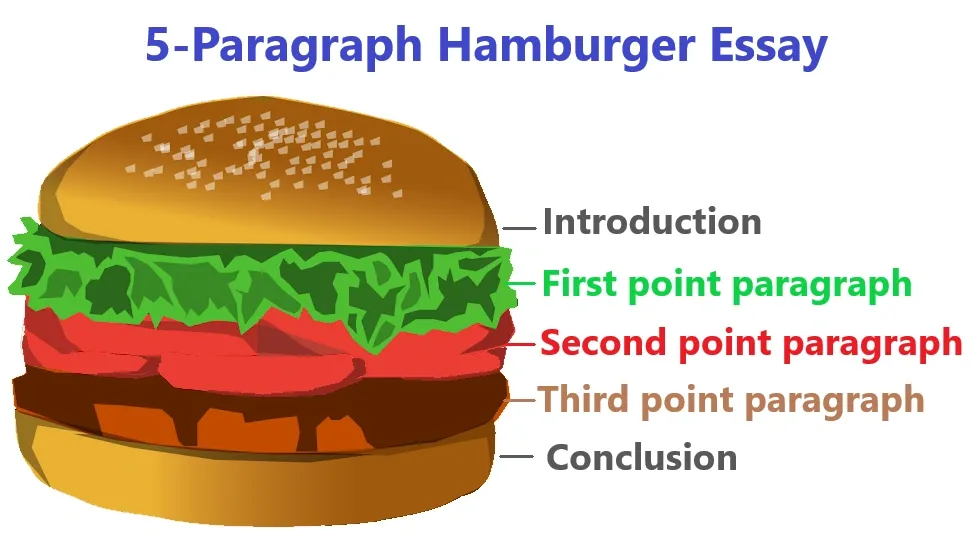The Simple Guide to Essay Format That Professors Love
The essay format that professors admire follows a simple upside-down triangle structure in the introduction. Your grade can jump from average to exceptional when you become skilled at proper essay formatting, regardless of the assignment length.
A well-laid-out essay has three main components. The introduction grabs attention and states your thesis. Body paragraphs build your arguments with logic. The conclusion brings everything together cohesively. This simple essay structure helps you arrange your thoughts and create an outline that flows naturally. Want to see what works best? Top-scoring essays start with broad concepts and narrow down to a specific, debatable thesis statement—a strategy that consistently earns higher grades from professors.
Your essay template needs transition words and clear signposts that guide readers through your arguments smoothly. A properly formatted introduction will impress your instructors, and these writing skills prove valuable beyond academics. You’ll use them in business documents and professional communication where structure makes a difference.
Understanding the Core Essay Structure
Professors consistently reward essays that follow a basic structure. Your ideas need three building blocks to make them clear and persuasive.
Understanding the Core Essay Structure
The three essential parts: intro, body, conclusion
A proper essay format needs three main parts. Your essay should flow like a trip with a clear start, middle, and end. Start with an introduction that presents your topic and thesis statement. Your body paragraphs should then develop your argument with evidence and analysis. The conclusion ties everything together and leaves a lasting impression on your readers.
Each part has its own job:
- Introduction: Sets the context, focuses on your thesis, and shows your approach
- Body: Builds your argument with evidence, analysis, and logical flow
- Conclusion: Strengthens your thesis and shows why it matters
Why structure matters to professors
Professors like well-laid-out essays because they show you know how to organize complex thoughts. A clear essay outline proves you value your reader’s time and intelligence. Your paper will stand out when professors read dozens of assignments.
Good structure shows you understand academic rules and can communicate your ideas clearly. Professors see structure as proof of critical thinking – you can arrange ideas logically instead of random thoughts. Your work becomes easier to grade against their criteria.
How structure supports your thesis
The structure of your essay supports your main argument. Your introduction states your position. Each body paragraph adds evidence that makes your central claim stronger. A solid essay template will help you connect every paragraph to your thesis.
Readers can follow your thinking process easily with this roadmap. Your thesis becomes more credible when each paragraph has a clear topic sentence, evidence, analysis, and smooth transitions. Professors can see how your evidence backs up your main point.
Note that good structure doesn’t mean being too formal – it gives you a framework to present your unique ideas in an organized way.
Crafting a Strong Introduction Paragraph
Your essay’s first impression comes from its introduction paragraph. This sets the tone and direction for everything that follows. A well-laid-out introduction does three significant things: it states your topic clearly, gets readers interested, and shows your thesis position.
Start broad, then narrow to your thesis
The best introduction paragraph format uses what many professors call the “funnel approach.” You start with a broader statement about your subject to give context. Each sentence then narrows the focus until you reach your specific thesis. This gives your readers a natural path to follow.
To name just one example, you could start with something that grabs attention like:
- A relevant question that frames your topic
- An interesting statistic or fact that emphasizes importance
- A brief descriptive scene or anecdote that shows your point
- A thoughtful quotation that connects to your argument
Your next step is explaining how this broader context connects to your specific topic. This creates a smooth path toward your thesis statement.
How to write a clear thesis statement
Your thesis statement should appear near the end of your introduction. It’s the central claim of your essay format. A strong thesis needs to be arguable rather than just descriptive – thoughtful readers should be able to disagree with it.
Your thesis must:
- Take a clear position or make a specific claim
- Answer a “how” or “why” question about your topic
- Use precise language instead of vague terms
- Pass the “so what?” test by showing why your argument matters
Writing a solid thesis takes deep thinking and revision. Many writers find their actual thesis only after they draft their essay, so they refine it as needed.
Common mistakes in introduction paragraph format
Starting too broadly stands out as one of the biggest problems in introductions, especially when you have vague phrases like “throughout history” or dictionary definitions that professors hate. You should also avoid long introductions filled with too much background – keep things concise and focused.
There’s another reason writers often stumble: creating a descriptive thesis instead of an argumentative one. When your thesis just states facts nobody would argue with, you’re summarizing rather than making an argument. Not showing what makes your topic matter leaves readers wondering why they should keep reading.
Building Effective Body Paragraphs

Image Source: University of Waterloo
Body paragraphs are the foundations of your essay format. These paragraphs develop your arguments through evidence and analysis. A well-crafted body paragraph doesn’t just present information—it proves your thesis step by step.
Using the MEAT method: Main idea, Evidence, Analysis, Transition
Students who use the MEAT structure create body paragraphs that professors love:
- Main idea: Start with a clear topic sentence that states the paragraph’s central claim and links to your thesis
- Evidence: Show specific supporting information—facts, statistics, quotations, or examples that support your main idea
- Analysis: Show how your evidence proves your point—this lets your original thinking shine
- Transition: Link to the next paragraph with a connecting sentence that maintains logical flow
Each paragraph works as a mini-argument that supports your overall thesis. Your analysis needs more space than evidence because professors value your interpretation more than fact collection.
How to connect paragraphs logically
Your paragraphs need smooth transitions that work like bridges for readers. Topic sentences should establish new points and connect to previous ideas at the same time. These transitions work as “signposts” that guide readers through your argument’s progression.
You can start paragraphs by referencing previous points before introducing new ones. Read through your work to check if each paragraph flows naturally from the previous one. A smooth connection between paragraphs shows you know how to build coherent arguments—something professors really value.
Tips for integrating sources and citations
The quickest way to add research into your essay outline focuses on:
- Signal phrases that introduce sources: “According to Smith…” or “Research by Jones reveals…”
- A mix of quotations with paraphrasing and summarizing
- Your analysis after quotes—sources shouldn’t stand alone
Short quotes work best within your text, while longer passages need block formatting. Without doubt, professors notice when students use too many quotes without analysis. Let your original thinking lead the way and use sources as support rather than replacements for your voice.
Writing a Memorable Conclusion
The conclusion paragraph makes the final impression on your readers when they finish your essay format. Professors remember this part the most since they read it last, so it needs special attention.
Restating your thesis without repeating
You need to present your thesis with fresh language while keeping your main argument intact. Copying the introduction’s thesis word-for-word looks lazy to professors. Here are some approaches that work well:
- Change the sentence structure to rephrase
- Add new insights you discovered while writing
- Link your thesis to bigger ideas
Let’s look at an example. Your original thesis might say “Social media negatively affects teenager’s mental health.” The conclusion could state “The evidence shows that too much social media use leads to psychological challenges among adolescents.”
Answering the ‘so what?’ question
Professors ask themselves “Why does this matter?” right after reading your argument. Your job is to show why your analysis matters. You need to explain the importance of your argument beyond just the topic at hand.
Your “so what” statement should:
- Take your argument to broader contexts
- Tell readers what to think or do next
- Stay focused without adding new evidence
How to leave a lasting impression
The conclusion should wrap things up and give readers something to think about. These strategies work well:
- Link to a bigger theme from your course
- Ask thought-provoking questions to explore
- Show how your argument applies to real life
- Create a “bookend” that connects to your introduction
- End with a powerful quote (don’t use too many)
Don’t introduce new arguments, apologize for missing points, or use phrases like “in conclusion.” A good conclusion blends your ideas, shows their importance, and helps readers see things in a new way—exactly what professors want to see in great essay structure.
Conclusion
Final Thoughts on Creating Professor-Approved Essays
This piece has shown you the basics that make up a well-laid-out essay format. These fundamentals will improve your academic writing by a lot and help you earn higher grades from professors who value clear organization and logical flow.
Your essay structure acts as the foundation of your academic writing. The upside-down triangle introduction, MEAT-structured body paragraphs, and thoughtful conclusion combine to present your ideas with impact. A proper format shows your respect for academic standards and highlights your critical thinking skills.
Professors like essays that follow this structure because it makes their grading easier. You benefit from expressing your ideas clearly and building stronger arguments. Time spent creating a solid outline before writing leads to better quality in your final work.
Make these formatting principles part of all your academic assignments. Short response papers and detailed research projects need these structural elements equally. The essay format isn’t a rigid set of rules – it’s a helpful framework that lets your ideas stand out through clear presentation.
These essay formatting skills give you tools that work way beyond the classroom. Such writing principles become valuable in professional settings where clear communication drives success.
FAQs
Q1. What are the three essential parts of an essay structure?
The three essential parts of an essay structure are the introduction, body paragraphs, and conclusion. The introduction presents the topic and thesis, the body paragraphs develop the argument, and the conclusion synthesizes the main points and leaves a lasting impression.
Q2. How can I write a strong thesis statement?
A strong thesis statement should take a clear position, answer a “how” or “why” question about your topic, use precise language, and explain why your argument matters. It should be arguable rather than merely descriptive, allowing thoughtful readers to potentially disagree with it.
Q3. What is the MEAT method for body paragraphs?
The MEAT method is a structure for creating effective body paragraphs. It stands for Main idea (topic sentence), Evidence (supporting information), Analysis (explanation of how the evidence proves your point), and Transition (connection to the next paragraph).
Q4. How do I avoid common mistakes in the introduction paragraph?
To avoid common mistakes in the introduction paragraph, steer clear of beginning too broadly, using cliché openings like dictionary definitions, writing excessively long introductions, or creating a purely descriptive thesis instead of an argumentative one.
Q5. What are some effective strategies for writing a memorable conclusion?
Some effective strategies for writing a memorable conclusion include connecting your argument to broader themes, proposing questions for further exploration, highlighting real-world applications, creating a “bookend” by referencing your introduction, or ending with a powerful, relevant quote. Avoid introducing new arguments or using clichés in your conclusion.



